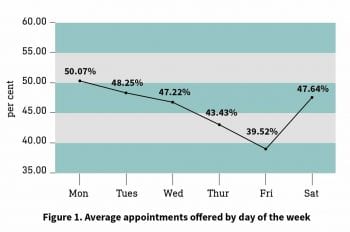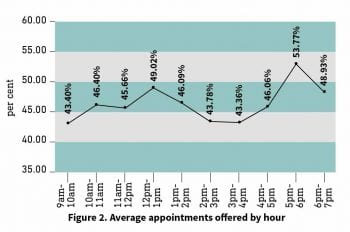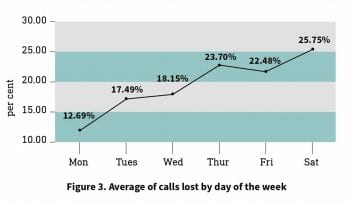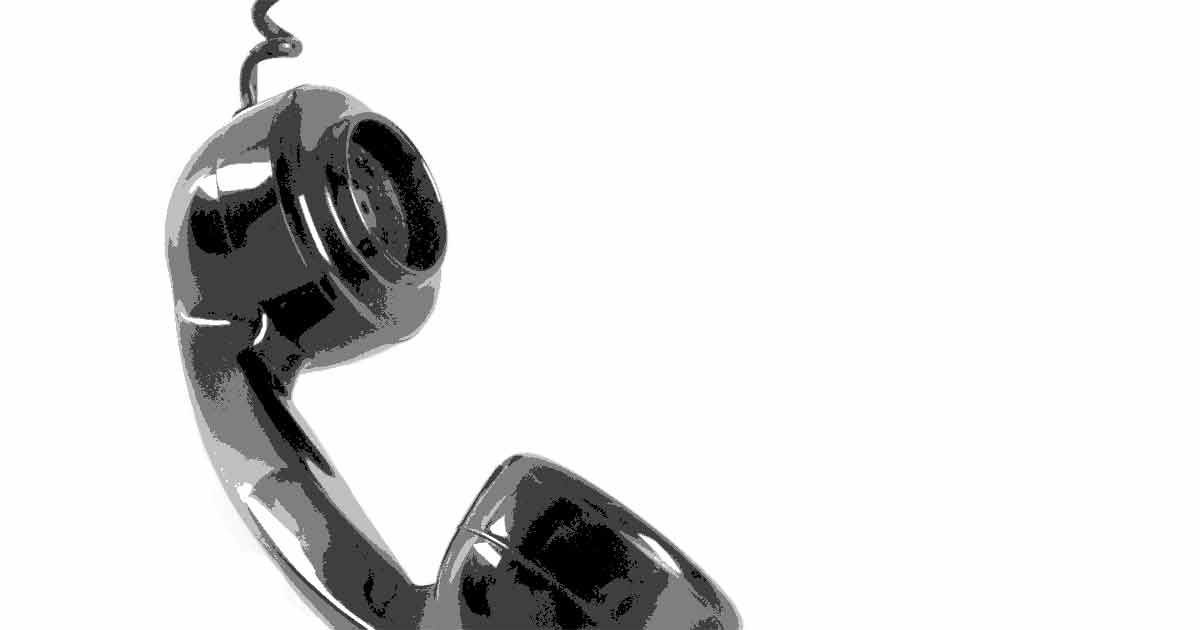Not all clients reach straight for the phone so you need to be smarter about reaching out to them.
For several years now we have talked about the fact as much as 90% of initial client contact in the average practice takes place over the phone. Fixing the phone has, therefore, been a fundamental requirement for every veterinary business, whether small animal, equine or mixed – ensuring there are sufficient incoming lines to cope with call traffic at the busiest times, and enough friendly, knowledgeable people to manage them effectively and convert calls into consults.
 But times change, technology moves on, and we all have new ways of accessing advice and services available in every aspect of our lives. Think about the many ways you make contact with businesses and manage everyday services, and then take a minute to appreciate how many of the things we do without thinking just weren’t options only a couple of years ago:
But times change, technology moves on, and we all have new ways of accessing advice and services available in every aspect of our lives. Think about the many ways you make contact with businesses and manage everyday services, and then take a minute to appreciate how many of the things we do without thinking just weren’t options only a couple of years ago:
- Online appointment booking.
- Live chats.
- Mobile apps.
- FaceTime and Skype GP consultations.
- Voice searches on mobiles.
- Remote programme management via smart TVs, USB sticks and consoles.
- Home assistance devices – closing curtains and selecting music using Alexa, Google and Siri.
- Pet, baby and home monitoring systems (CCTV, central heating sensors, intruder alarms and doorbells linked to your phone).
- The flexibility and great value offered by Uber and Deliveroo, booked and managed with the utmost convenience via an app.
Fewer and fewer of us now pick up the phone and ring the vet as a first option. We’ve already asked a friend, Googled symptoms, bought products online or used some old-fashioned common sense to see whether the dog off his food or the cat that just seems a bit “off” rallies by the end of the day. You might not like it, but this is the new normal. After all, it’s how we all behave in other areas of our own lives – don’t tell me you haven’t searched online rather than calling your doctor (appointment in three weeks, anyone?). We can’t be surprised or resentful that our clients are taking the same route when it comes to the care of their pets and animals.
Change is a process
Los Angeles VCA Animal Hospitals’ network of 750 practices has already made the leap, developing an Amazon Alexa voice assistant service for clients to book appointments or check when vaccinations are due.
The group already offers clients a myVCA app, through which owners receive personalised advice, access to health records, appointment booking and 24/7 live chats with a vet. Make it easy, make it happen.
Onswitch holds regular research groups with pet and horse owners to find out how they behave and what factors inform the choices they make. Clear patterns have emerged that hold true, from the UK to Australia:
- Owners make pragmatic decisions about their animals – they know them best, so will generally call the vet as a last resort.
- Clients value the expertise of their vet and understand that great care comes at a price (very few people complain about fees, although gripes about drug mark-ups are much more common).
- Searching online is a normal first step when owners look for information on their pet’s care. Horse owners will also ask at the yard or speak with fellow equine enthusiasts for advice.
- Trust is hugely important – everyone in the practice team needs to demonstrate real interest and connection with both client and animal.
- Owners want things to be easy and convenient – online booking, long opening hours, and help with budgeting for both planned care and unplanned treatment.
Zero moment of truth
 Marketers used to talk about the first moment of truth in the life cycle of a product or brand; the point at which consumers become aware of it. Now we have access to limitless online resources, consumers find out about a product (or practice) often without even looking for it.
Marketers used to talk about the first moment of truth in the life cycle of a product or brand; the point at which consumers become aware of it. Now we have access to limitless online resources, consumers find out about a product (or practice) often without even looking for it.
Social media, blogs, online forums, webcasts, websites and the like fill our subconscious with ideas. And these ideas are so easy to explore further, before the traditional first moment of truth, in what is now universally referred to as the zero moment of truth (ZMOT).
For those of us working in the veterinary sector, this has huge implications and marks a giant leap forward from the days when the receptionist’s sole purpose was to answer inbound calls. It means by the time potential clients pick up the phone to talk with you, they have already identified it is your practice they want to help them. They aren’t ringing to ask how much your vaccinations are – they’re ringing because their dog needs vaccinations and, from what they’ve heard about your team, they know your approach will fit with theirs. They’ve gone past the ZMOT by the time they pick up the phone and, ideally, your own online presence will have played a huge part in this:
- Your website should have a modern feel and be easy to navigate, with all key information on the home page (opening hours, contact details, emergency procedure, links to Facebook and Twitter).
- The tone and imagery used should be warm, friendly and professional. Photographs are of people, not equipment.
- Social media pages are updated with new content daily, and feature a good mix of practical advice, practice information, team news and patient stories. The team interacts with friends and followers, and responds to reviews.
- The practice has good ratings from Google reviews and compares favourably with local competitors.
But what ZMOT really means is the phone should not be the sole focus of your energy. Today, it is no longer a passive and reactive means of communication, when it can so easily be used as a proactive connection between practice and client.
 Before too long, it won’t matter how many incoming lines you have, or what your call waiting capacity is, because if you’re “doing” the phone right, there should be minimal incoming call traffic, which feels like a big moment of truth in itself.
Before too long, it won’t matter how many incoming lines you have, or what your call waiting capacity is, because if you’re “doing” the phone right, there should be minimal incoming call traffic, which feels like a big moment of truth in itself.
Optimising call conversion
Of course, many owners are still going to ring, and when they do, it’s vital a good percentage of these are converted into paid appointments (target 40%). Onswitch Index data shows, although appointments are not routinely offered to callers in many practices, when they are it is more likely to be at the beginning of the week and at the end of the day (Figures 1 and 2).
Data also shows calls are more likely to be “lost” (engaged or not answered) as the week progresses, with a quarter of all inbound calls not taken on Saturdays (Figure 3). That’s an awful lot of lost business that could easily be picked up with a bit of focus on tightening up call handling protocols, equipment and rotas.
Calling time on outbound calls
Unfortunately, despite the shifts that have occurred in the way we communicate with many other service providers, on the whole, our profession continues to stubbornly look the other way and refuses to think about the need to change how we manage client communications.
Many practices still do not have online appointment booking (despite the fact busy people often remember the need to sort out Jasper’s booster just as they are drifting off to sleep. And their mobile is right there). Just get it sorted. It really is very easy and will boost practice footfall.
 But it’s not just the lack of online functionality. In veterinary practice, so many old fashioned communication approaches still persist, most of them centred on the phone:
But it’s not just the lack of online functionality. In veterinary practice, so many old fashioned communication approaches still persist, most of them centred on the phone:
- We ask clients to call in at the end of the day to check whether their beloved Bertie is ready to go home. Why can’t we just call the worried owner with updates?
- We rely on owners calling in to book annual health checks and vaccinations. Okay, you might send an automated text reminder, but what’s stopping you simply picking up the phone to invite Smudge and her owner in at a mutually convenient time?
- George’s test results have arrived, but you told the yard to ring “in a few days” so no one makes the quick call to put the owner’s mind at ease.
When we talk to owners, their feedback is clear – they want you to make it easy for them to provide great care for their pets and horses. With the best will in the world, they will forget when vaccinations and wormers are due, so call and tell them – they are very likely to make an appointment with you there and then, and you’ll get the sale, rather than the local pet care emporium.
When you have news about an in-patient, call the owner – not only will you build rapport and trust by demonstrating you understand how worrying it is, but you’ll also be able to make sure the call happens when you have time for it, not at the end of the day when the call waiting lights are blinking angrily at you to get off the line.
Huge potential
In summary, the phone offers huge potential for practice teams to provide an excellent customer experience, but it’s not just a case of waiting for the calls to come in and managing them well. In an ideal world, the number of inbound calls will be minimal.
In this brave new world, the answers to common questions can be found on your website (which is optimised for voice searching), appointments can be booked online, quick queries can be answered with a live chat, and your team keeps clients up to date when test results and medications arrive, and pets and horses are ready to be collected.
